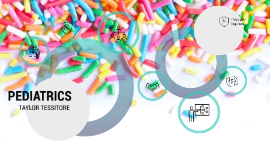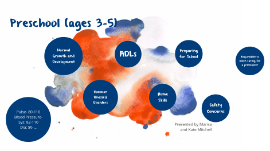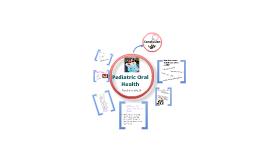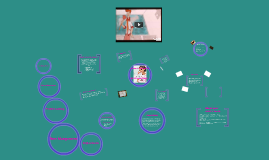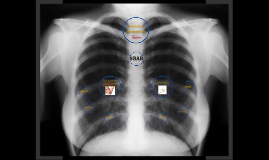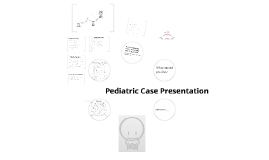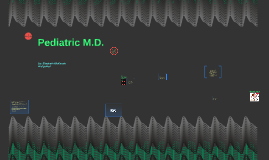Pediatric Presentation
Transcript: What would you Do? Does this Patient need a lumbar puncture? Does this patient need antibiotics? What if he was 4 weeks older or younger? Should the ED have sent this Patient Home? Pediatric Case Presentation HPI :2 month-old previously healthy female who presents to ED with a 3 day history of fevers. T max 103. Was evaluated in ED 1 day prior to admission for fevers, had normal CXR, RSV and Influenza swabs. Was sent home to follow up with PCP the next day thinking that this was a viral URI. No antibiotics were started. Fever continued. Feeding decreased from 5 to 2 oz Q3-4 hrs and has had minimal stool over last 4 days. UOP normal. Patient is fussy. Urine Culture: Negative Blood Culture: Negative, CSF Culture Negative CSF glucose 45, CSF Protein 47 CSF Cell count 93 WBC 23 segs 31 lymphs and 46 monos Enterovirus RNA negative Influenza swab Negative, RSV swab Negative Body PMH: Born NSVD. Mom was GBS negative and had no HSV history. Born full term NSVD. There was meconium aspiration for which the child was treated. no other complications. pt was born 3625 gms. Feeding history : Breast fed Start 2 oz q 3 hrs, nothing for the last 15 hrs surgeries none Social History: The patient lives at home with her mother, father and brother. not in daycare. no smokers in the home. no pets. meeting developmental milestones. Brother has been sick recently Immunizations: has not received her 2-month-old well-child check immunizations yet, was to have appointment the next day. Allergies: None Medications: Children's Tylenol last dose a few hrs before admission Body Body Well appearing children Must decide if low risk for SBI WBC 5000 to 15000 with less than 1500 bands Normal urinalysis Normal CSF pleocytosis have reliable follow up within 24 hrs Age 30-60 days - If low risk and well appearing, get CSF culture, Blood Cultures, Urine culture, may send home with one dose of empiric ceftriaxone and close f/u Age 60-90 days - If low risk and well appearing may get blood cultures, Urine culture and skip the LP. Pt is ill appearing Maternal history of genital HSV If pt has mucocutaneous vesicles Or if it is in the first 14-21 days Any temp of 38 C or greater warrants: CSF culture, Blood Culture, Urinalysis and Urine Culture If pulmonary symptoms get a chest X-Ray Consider HSV culture of Vesicles, conjuctiva blood, csf, oropharynx, urine and stool (Automatic in first 14 days) Neonatal period of 30-90 days Neonatal Period 0-28 days CC: Fever In the first 7 days: Most likely to be vertical transmission PPROM, Maternal Fever, GBS positive, HSV outbreak, premature delivery, or history of STDs 7-90 days of life: Most likely to be from the environment prolonged hospital stay, premature delivery, Formerly of the UW-Green Bay Mens Cross-Country team Smitherman, H. et. al. 2012, Evaluation and management of fever in the neonate and young infant (less than three months of age). Accessed online at UpTodate.com Empiric Antibiotics should Include: Risk Factors For Serious Bacterial Infection Body Physical Examination: Vitals T 101.2 pulse 160, respirations 29 and pulse ox 99% on RA General: listless and fussy, nontoxic HEENTnormocephalic, PERRL, Fontanelle is full, resisting flexing of the neck Cardiovaascular: Tachycardic no murmurs Lungs: clear to auscultation bilaterally, no crackles or wheezes Abdomen: Soft, nontender and nondistended. Bowel sounds are present Extremities: Warm. deceased movement, does have a startle response Skin: acyanotic. No rash Neuro: good tone, no focal findings, preference for turning head to the right ROS : No rash’s currently however there was a red splotches all over body one week ago, evaluated at a residency clinic (obviously not as good as ours), and was told it was allergies vs viral in nature. No other symptoms until today Body Spark Back to our Case Body Labs on Admission: WBC 16.4 HGB 11.9 PLT 500 UA: trace blood CSF Gram Stain: negative Labs From previous ED visit: RSV: Neg Influenza A and B: Neg CXR: Neg Neonatal Fever: Fever in the First 30 Days of life If child has temp over 38.5 or is ill appearing they have a high chance of SBI Culture blood, CSF, and Urine Chest X-Ray if there are any respiratory symptoms Ceftriaxone empirically Ampicillin up through 6-8 weeks to cover listeria Ill appearing children 30-90 days of age: By Seth Bodden MD Body Fever of Unknown source: Fever in the first 90 days of life. Body Fever of unknown source Body Antiviral Therapy if: Body Most Common Source of Meningitis in this age are: Group B strep, E.Coli, GNRs, Enterococcus Listeria Body What would you Do? Because neonates have impaired immune systems. There immune cells cannot rapidly multiply like ours, plus they are not immunized yet. They also do not have a fully intact Blood Brain Barrier. All These leads to pretty serious outcomes In the first week of life 12% of children presenting with fever have a serious bacterial infection Ages 30-90 if ill-appearing 45% may have serious bacterial infections Hospital Course: Why






